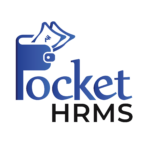
PEO (Professional Employer Organization)
Table of Contents

Reading Time: 8 minutes
Given its booming economy and relatively cheaper labour, India has become a prime location for businesses, who wish to expand their business overseas. Professional Employer Organizations or PEOs have become an essential partner for these businesses as they enable easier market entries and streamlined operations.
Hence, let us understand what is a PEO and understand its impact on companies who wish to establish a base of operations in India.
What is a PEO (Professional Employer Organization)?
A Professional Employer Organization (PEO) is a company that co-employs staff for another organization, by undertaking their human resource operations. Under this partnership, the PEO undertakes the administrative tasks related to HR management, such as payroll, benefits administration, compliance handling, and more.
In the Indian context, PEOs act as strategic partners who enable organizations to expand into the country by providing administrative HR functions, while these businesses can take care of their business expansion. Hence, PEO services prove highly significant for organizations that are expanding into the Indian market.
How does a PEO work?
Typically, PEOs enter a strategic partnership with businesses to help them establish in India and undertake their operations smoothly. Due to this partnership, they effectively co-employ their employees by undertaking their administrative responsibilities, while the company can focus on business expansion.
The PEO is in-charge of clerical tasks such as HR administration, hiring, payroll and benefits, compliance handling, and more. On the other hand, the company takes care of the employees’ training, managing their daily tasks, setting their Key Performance Indicators (KPIs) and Key Responsibility Areas (KRAs), etc.
Such division of responsibilities enables the company to focus on their business strategies, while the PEO takes care of their employee-related functionalities through dedicated employee management software.
What Does a PEO Agreement Contain?
With a Professional Employer Organization (PEO), businesses can outsource their HR administration. Since human resources manage the most valuable resource for the organization, a well-drafted agreement is developed to ensure smooth partnership. If you are planning to procure the services of a PEO, it is essential to understand the various terms and conditions within this agreement, such as:
- Services Provided: The agreement lists out specific services provided like payroll processing, benefits administration, tax filing, workers’ compensation insurance, and compliance support.
- Fee Structure: It also contains the details of how the PEO will be compensated, including the calculation method and payment schedule.
- Employee Management: IT also provides clarity on which party is responsible for hiring, training, as well as terminating employees.
- Benefits Plans: It also provides details of the health insurance, retirement plans, and other employee benefits offered through the PEO.
- Liability & Risk Allocation: There are specific provisions regarding potential liabilities and how they will be shared between the company and the PEO.
- Termination Clauses: It also specifies the conditions under which either party can terminate the agreement, while also sharing the process to do so.
- Compliance: It also assures that the PEO will comply with all applicable employment laws and regulations.
- Data Confidentiality: It also provides complete assurance regarding the protection of sensitive employee and employment data.
What does a PEO offer?
Businesses utilize the services of a PEO for handling their administrative HR duties such as:
- Recruiting and Onboarding
- Attendance Management
- Employee Benefits Administration
- Maintaining Insurance Packages
- Compensation Claim and Coverage
- Leave Management, etc.
While all these administrative tasks require the PEO to directly handle the employees, the organization employing the PEO handles their daily duties by setting their KPIs and KRAs, as well as monitoring their performance and taking care of their appraisals and training.
What PEO does not Offer?
Though PEOs offer numerous solutions for handling HR operations. However, being an outsourced platform, it cannot take the responsibility of controlling your business operations. It can only help streamline the hectic time-consuming HR processes and manage employee-related clerical tasks.
Hence, PEOs does not offer the following:
- They do not take control of the company’s day-to-day business operations.
- They do not develop business strategies for the organization.
- They are not involved in product development or research and development activities.
- They do not manage the client sales or target achievement.
- They do not handle financial planning, budgeting, or full-scale accounting functions.
Difference between PEO and EOR
The major difference between an Employer of Record (EOR) and a Professional Employer Organization (PEO) is the relationship with the employees. While PEOs co-employ the staff by sharing HR and associated functions with their clientele, EORs are the legal employer of their staff members, and hence, handle all aspects of their employment.
|
Factor |
PEO |
EOR |
|
Business Relationship |
PEO shares employment responsibilities with client, resulting in co-employment model. |
EOR takes complete employment responsibilities, becoming the sole employer for the employees. |
|
Legal Compliance |
PEO requires a local business. |
EOR can hire even without a local business. |
|
Services |
Payroll and compliance handling, recruitment, leave and attendance management, etc. for local business. |
Payroll and compliance handling, recruitment, and other HR operations globally. |
|
Geographical Scope |
Domestic operations within the country where the PEO is hired. | Global operations management; making it ideal for global expansion and remote employment. |
|
Cost |
Lesser upfront costs with eventual additional costs related to employee insurance and benefits, entity setup, etc. |
More upfront costs but reduced long-term costs as there is no local entity setup. |
Advantages of PEO
Hiring a PEO has numerous advantages for an organization since it takes care of most of the administrative work related to the employees. However, there are other facets to this partnership which ensures the smooth functioning of the daily tasks within the organization. These factors enable the company employing the services of the PEO to focus on other strategic initiatives, while the PEO take care of the clerical HR-related tasks.
The major advantages of PEO are:
1. Simplified Payroll
PEOs can simplify the payroll complexities, especially in cases where the company hiring the services primarily undertake their business outside India. These organizations may not be aware of all the statutory norms and practices within the Indian labour laws, which could prove to be costly in case of any defaults. Hence, a PEO will be able to simplify the payroll process, while also ensuring timely payments to the employees.
2. Reduced Costs
PEOs also prove significantly instrumental in reducing the administrative costs of the organization employing their services as they undertake all clerical tasks related to their employment. Additionally, the company can focus on optimizing and streamlining their business operations as their PEO undertakes the rest. It enables them to further increase the efficiency of their business operations, resulting in further reduction in operational costs.
3. Better Productivity
Since the PEO handles employee-related administrative responsibilities, the company can focus on assigning the daily tasks to their staff members and optimizing their productivity. The HR team can focus on employee productivity and upskilling instead of having to deal with the clerical aspects of their employment. Similarly, they can also focus on employee development programs, performance management, etc.
4. HR Support
PEO offers organizations effective human resource support by undertaking various administrative HR functions. The PEO handles almost as aspects of employment from recruitment to offboarding. Such support allows businesses to maintain a positive work environment, reduce HR-related stress, and focus on their core operations while having access to a team of HR professionals to assist with various aspects of employee management and development.
5. Time Savings
Organizations can also save a lot of time by partnering with a PEO, as it enables them to focus on the core business operations and strategic initiatives, ultimately increasing productivity and efficiency. It ensures delivering advanced HR expertise, which translates to employers getting enough time to focus on their product and reduce the need for in-house HR staff to manage these administrative functions, resulting in significant time savings for these companies.
6. Risk Management
PEOs play a vital role in risk management by offering expertise in areas such as workers’ compensation, safety programs, and compliance with labour laws. It provides proper guidance to the client company for streamlining the entire HR process and mitigating the risk of errors in area of payroll processing and tax compliance. Additionally, it helps the company minimize the risk costly legal proceedings, enhancing overall risk management strategies and reducing potential liabilities.
Disadvantages of PEO
While a PEO may provide multiple benefits for an organization choosing their services, they also come with a slew of disadvantages. If you are an organization trying to avail the services of a PEO, you should be aware of these cons beforehand to ensure that you minimize their effects.
Following are some of the major disadvantages of PEO:
➔ Steeper Costs
PEOs tend to be costlier than simply outsourcing your payroll and benefits administration. In some cases, the financial advantages that the company gained through the PEO can even be offset by their charges. Similarly, if the PEO changes their benefits provider, the organization hiring their services might not have a say in it, even if their employees are happy with the benefits provided buy the current service provider.
➔ Rigid Administration
As PEOs are bound by contracts with the organization, it is often found that they follow a rigid administrative pattern. If employee management was solely in the hands of the organization, they would be able to remain more flexible when it comes to managing their employees. However, due to the influence of the PEO, companies hiring their services often find themselves in a tight spot whenever they need to make any changes to their employee-related policies.
➔ Reduced HR Quality
Since employees have limited access to HR services under a PEO, it reduces the overall experience of their HR department. The reduced quality of HR experience would also result in lower quality of HR services, resulting in poor employee experience. It can even negatively impact company culture, employee morale and their engagement with the organization.
➔ Company Data Sharing
Choosing the services of a PEO also requires the organization to share company data with the PEO. While some companies may be onboard with the idea of sharing their employee data with another organization, some companies might hesitate to share this information resulting in friction between the organization and the PEO.
Tips to Choose the PEO
If you are on the lookout for a PEO, choosing the right one will provide you with complete peace of mind, while the wrong one will make things difficult for your organization. Similarly, there are both pros and cons of PEOs that should be considered while choosing the right PEO.
Hence, keep in mind the following tips while choosing the right PEO for your organization:
- Assess Requirements: You should evaluate your requirements and build a list of the HR duties that you wish the PEO to undertake for your organization.
- Research PEOs: Once the list of responsibilities is created, you should research PEOs to understand which one provides all the features that you require.
- Assess Technical Prowess: It is essential to evaluate the chosen PEO’s technical expertise to ensure whether they will be able to keep up with your organizational structure and daily tasks.
- Check for Financial Stability: Similarly, check for the PEO’s financial stability as they are required to manage your employees’ payroll and benefits without any interruptions.
- Check for Flexibility: Additionally, check how much will the PEO be able to alter their services offerings to cater to your business.
- Understand the Exit Strategy: You should also check for the PEO’s exit strategy when ending the partnership and how the transfer of HR responsibilities and employee data occur.
- Ensure Transparent Pricing: Finally, since you would be essentially subscribing to the services provided by the PEO, check whether they have transparent pricing, as it will help you avoid unpleasant surprises in the future.
Conclusion
A PEO can be an effective bridge for organizations planning to expand overseas. It enables them to gain foothold in new markets, while ensuring compliance with the local labour laws and tax policies. Since the PEO and the organization co-employ their staff, the company can focus on expanding their business, while the PEO provides payroll and additional benefits, manging their leave and attendance, etc. It enables the organization to grow their business as the PEO tackles the administrative tasks for the organization, making them an essential ally in business expansion.
FAQs on PEO
1. What does PEO stand for?
The full form of PEO is Professional Employer Organization. It provides HR and co-employment options to organizations, enabling them to focus on business expansion and growth. PEO undertakes the administrative aspects of employee management such as payroll processing, benefits administration, leave and attendance management, etc.
2. What is PEO used for?
PEO is used to outsource various clerical employee management tasks such as compliance management, payroll processing, etc. It allows companies enjoying their services to co-employ their staff by undertaking their HR duties for them.
3. Who is the employer in a PEO?
In the co-employment scenario, the PEO itself acts as the employer for the employees of an organization. Since it undertakes their payroll and compliance management, they are the legal employers for the employees. However, their daily tasks are managed by the organization employing the services of the PEO.
4. What is a PEO company?
A PEO company is an organization that partners with other businesses to co-employ their staff. In this partnership, the PEO undertake the administrative and clerical aspects of employee management, while the business will be responsible for managing the daily tasks of the employees.







